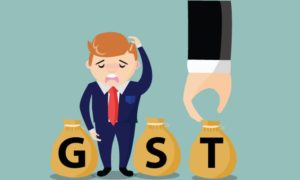Personal loans play an important part in the financial landscape, providing individuals and businesses with the financing they need to fulfill their objectives. Effective loan management, on the other hand, necessitates a complete grasp of the loan lifecycle as well as the use of best practices at each stage.
Personal loans are a useful instrument for paying for unforeseen expenses as well as ideal vacations. It can, however, often be stressful to understand how loans work and to manage repayments appropriately.
Think about using a personal loan to help you reach your financial goals. Whether you’re starting a business, paying off debt, or improving your house, a well-managed loan can be a great starting point. Following are some doable suggestions to help you get the most out of your loan and achieve your goals.
Whatever the reason for taking out a personal loan, it’s imperative to know how to effectively manage it all the way through to maturity. From application to closing, you must complete all necessary steps for a personal loan and, to get the best results, follow sensible loan servicing advice.
- Establish a budget: A new personal loan adds a new monthly expense to your budget. To properly include your loan payments, consider these budgeting tips:
- Gather your financial data. Get data regarding your earnings, outlays, and debts.
- Sort your expenses into categories. Make sure you keep track of your expenses by organising your spending.
- Decide where to make cuts. Check for any costs that could be eliminated to help you pay off your loan.
- Set aside money for your loan payment. Make sure your budget includes your loan payment after you’ve established your monthly spending cap.
- Monitor your advancement. Regularly review your budget and make any necessary adjustments.
- Configuring AutoPay: One excellent way to guarantee that your loan payments are made each month on time is to set up autopay. Many lenders provide the option of setting up autopay immediately through their online account page. After login, navigate to the loan management section and find the “payment options” or “autopay” page. To set up automatic withdrawals, enter your bank account routing number and account number. Decide on the amount to be deducted monthly (usually the minimum payment or more) and select the payment due date or a few days in advance for adequate money.
- Make extra payments if possible: Increasing your personal loan payments is a prudent financial move. Long-term savings can be achieved by reducing total interest payments by increasing your loan principal contribution. Further payments may also shorten the length of time you have to pay back your loans, allowing you to pay off debt earlier. Getting paid on time—even in advance—may improve your credit score.
- Refinance if feasible: You might be able to lower your loan burden by refinancing. Your higher credit score might make you eligible for refinancing with a lower interest rate if you’ve been managing your credit well and making on-time payments. This could result in significant cost savings for you over the length of the loan. The rate of interest varies over time. Refinancing enables you to benefit from lower rates if they have dropped since you obtained your loan.
- Review the fine print: Knowing the terms and conditions of your loan is essential. Read your loan agreement through completely before signing. The terms of the loan, interest rates, repayment plans, costs, and other relevant details are all included in this document. Gaining an understanding of these traits will help you better manage your debt and steer clear of unforeseen events.
Pay close attention to details such as the interest rate, annual percentage rate (APR), origination fees, payback period, late payment fees, and, if applicable, prepayment penalties. While early repayment can be a smart move, there are a few things to keep in mind. Although it manages personal debts well, some lenders may charge an early repayment fee. Make sure to account for this penalty when calculating whether early repayment offsets the expense.
Making extra principal payments whenever you can will help you pay off the loan faster and save money on interest, even if you are unable to repay the entire amount owed. If interest rates have dropped considerably since you took out the loan, refinancing might eventually result in a lower rate and savings.
Read More: India’s forex reserves hit record high of $651.5 billion as of May 31
Frequently Asked Questions (FAQs)
Q. How to reduce my monthly personal loan payment?
There are several measures you can take to lower your monthly personal loan payments. The following are some possibilities to consider. Contemplate on the following techniques for lowering your monthly personal loan payment.
- Use windfalls: Direct any unexpected income, such as bonuses or tax refunds, to your loan principal. Even small additional payments can significantly reduce interest expenses and decrease your loan term, eventually lowering your monthly payment.
- Consider refinancing: If your credit score has improved since you obtained the loan, you may be eligible for a lower interest rate by refinancing. This directly translates to a lower monthly expense. However, consider prepayment penalties and refinancing fees to ensure it’s a financially sound decision.
- Negotiate with your lender: Speak with your lender and try to work out a longer loan term so that the remaining amount can be paid off over time. This lowers the monthly payment but extends the period of interest paid, potentially increasing the total cost of the loan.
- Debt consolidation: If you have multiple high-interest loans, you may be able to lower your total monthly payment burden by consolidating them into a personal loan with a lower interest rate.
- Examine hardship programs: Get in touch with your lender to talk about hardship relief options if you’re struggling financially and finding it difficult to make payments. These programs might offer short-term solutions that let you pause or reduce your payments for a while, like deferment or forbearance.
- Examine your spending plan: Find areas where you can save money so that you can pay off your loan.
- Establish automatic payments: By ensuring that your loan payments are made on time, you can maintain a high credit score and possibly be eligible for better loan terms down the road.
Q. What are the downsides of taking a personal loan?
A lot of personal loans are unsecured, meaning you don’t have to provide assets or collateral to secure the loan. You run the risk of defaulting on your personal loan if you miss payments. In addition to requiring you to repay the full loan balance right away, defaulting could lower your credit score and make it more difficult for you to obtain credit in the future. Applying for a personal loan should only be done if you are certain that you can afford the monthly payments.
Read More: 6 key financial changes in June 2024: Credit card rules, mutual fund nomination and more
Q. State one fact about personal loans that all must know.
Personal loans offer quick financial assistance for covering immediate expenses. However, they remain a debt that requires repayment. Effective management of your personal loan helps reduce the risk of missed payments, safeguarding your ability to borrow in the future.
Q. What inquiries should I make before obtaining a personal loan?
Before taking out a personal loan, you should ask yourself and your lender the following crucial questions:
- Should I apply for a personal loan? If at all feasible, take into account other options like utilising savings or a low-interest credit line.
- How much cash do I require? To prevent taking on more debt, only borrow as much as you can easily pay back over the course of the loan.
- What is the loan’s intended use? Since personal loans are frequently unsecured, be sure to use the money for the intended purpose.
- What is the interest rate? Recognise the total annual cost of borrowing, inclusive of all fees, and evaluate the APRs offered by different lenders to identify the best offer.
- What additional loan fees are involved? Ask about late payment penalties, application fees, origination fees, and potential prepayment penalties.
- How long is the loan repayment period? Compare the amounts of interest paid over a shorter term (higher monthly payments) versus a longer term (lower monthly payments and more interest). Choose a time frame that aligns with your financial objectives and budget.
- What is the required minimum credit score? It’s important to know your credit score because a higher score usually translates into a lower interest rate.
- How much will I be paid each month? Check that this payment, along with your other financial commitments, comfortably fits within your budget.
- What support options are there if I’m having problems paying my bills? Find out if your lender offers any hardship assistance programs, like postponement or forbearance.
- Does early loan repayment carry a penalty? Verify whether there are any costs associated with repaying the loan before its term expires.
- What are the available payment methods? Ask the lender about other available payment options, such as automated withdrawals and online payments.
- What is the history of the lender? Examine the lender’s track record for transparency and customer service before signing a loan agreement.
Q. What are the common purposes for using a personal loan?
Personal loans are a versatile lending solution that can meet a variety of demands. Here are some common applications:
- Debt consolidation: Many people choose personal loans to simplify their finances by consolidating various debts into a single loan with possibly reduced interest rates, making repayment easier.
- Home improvement: A range of home improvement projects, including additions, repairs, upgrades, and renovations, can be funded with personal loans. These projects raise the value and usability of your home.
- Large items: Without the high annual percentage rate (APR) of credit cards, personal loans are the best option for financing large items like furniture, appliances, gadgets, and even vacations.
- Unanticipated expenses: These loans provide you with quick access to money in case of unanticipated costs like auto repairs, medical bills, or emergency travel.





































